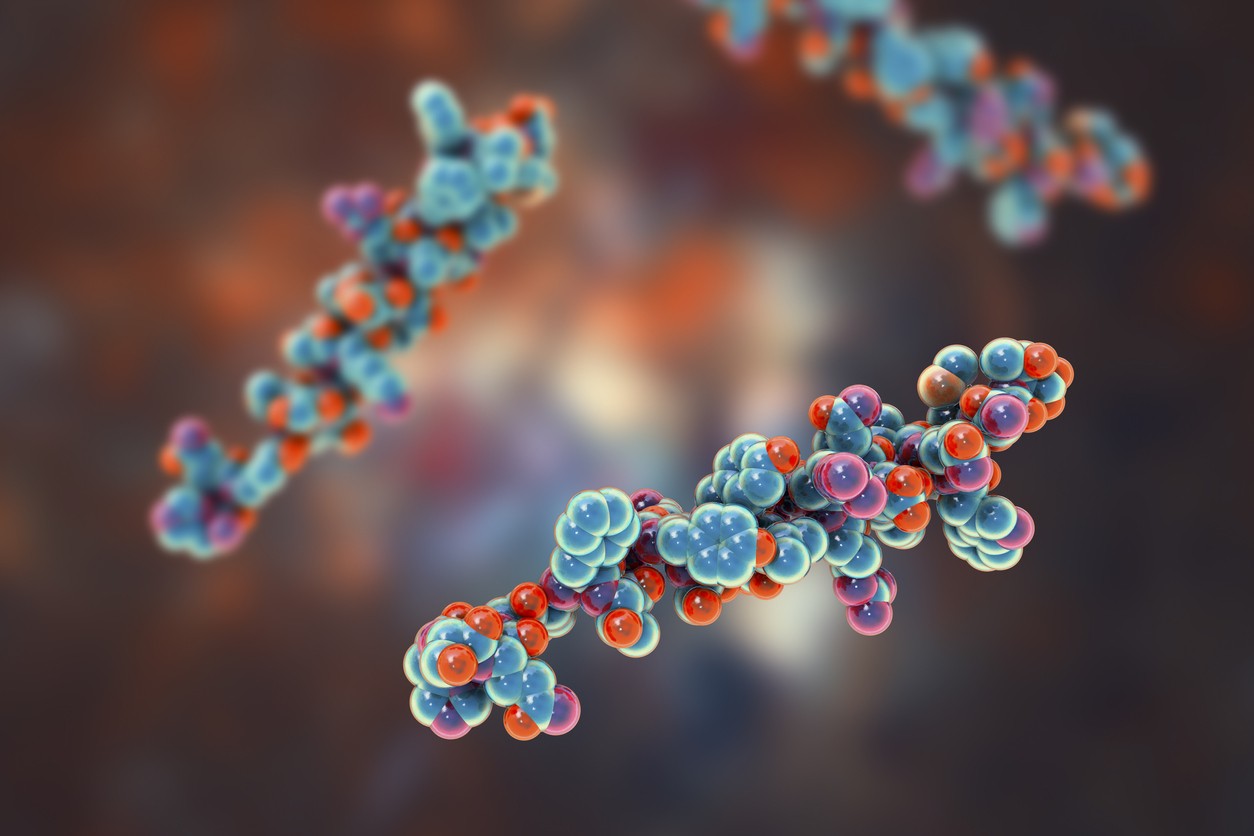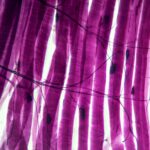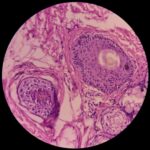No products in the cart
Ipamorelin & GHRP-2 and Muscle Cells

Both peptides are structural analogs of ghrelin, a natural peptide hormone produced in the gastrointestinal tract. Ghrelin is suggested to promote the release of growth hormone (GH) from the pituitary gland and regulate hunger hormone signaling in the brain, and it is often referred to as the “hunger hormone.” Similarly, the peptides are speculated to perform the same function by associating with the growth hormone secretagogue receptor.
Growth Hormone Releasing Hormone (GHRH)
GHRH is suggested to interact with the Growth Hormone Secretagogue Receptor (GHS-R). Researchers speculate that this interaction may have a wide spread of impacts, including cognitive function and associations, sleep-wake cycle, memory, glucose metabolism, reward centers, and taste sensation. GHS-R activation and stimulation are suggested to lead to alteration in energy metabolism, shifting from catabolism to anabolism. This shift is speculated to be mediated through an increase in the release of growth hormone. GHS-Rs appear to be prevalent both on the pituitary gland and hypothalamus. Therefore, both Ipamorelin and GHRP-2 are speculated to associate with the receptors and promote a two-way increase in GH release. GH release is suggested to be directly enhanced upon peptide-GHSR association on the pituitary glands. Hypothalamic stimulation is considered to enhance the release of GHRH, which, in turn, binds to cognate receptors on the pituitary gland and improves GH release.
The shift in the energy balance does not appear to be a straightforward catabolic-to-anabolic change. These peptides, speculated to be fat-burning in nature, are suggested by researchers to act on adipocytes to enhance the mobilization of stored fat. Simultaneously, there is an impetus for muscle and tissue repair and building, better known as lean body mass formation. Thus, the alteration in energy homeostasis may act to cause a complex alterations in lean body mass formation and thereby anabolism of tissues.
Preserving Growth Hormone Physiology
Ipamorelin and GHRH-2 are suggested to be similar in their mechanism of alteration in physiologic levels of GH. Before significant research was conducted on synthetic peptides, research studies focused on directly supplementing growth hormone, which appeared to bring about a direct impact in the positive action of hormone but disrupted the natural physiological level of the same. Growth hormone is considered to show a gradual surge and decrease in levels in a twenty-four-hour physiological cycle. Exogenous supplementation of the hormone in animal models appeared to result in sharp surges and falls in the hormone level, and thus its biological effect did not sustain long. Maintenance of the normal pulsatile expression cycle of GH is suggested to help overcome the detrimental impact of sudden GH surges, such as cardiac damage, joint pain, swelling, and acromegaly. Introduction of Ipamorelin and GHRP-2 blend is speculated to enhance the physiologic mechanisms of growth hormone release without producing an excess of the hormone. Thus, the natural hormone level is suggested to be maintained and may help to overcome the effects of sudden hormone spikes considered to be triggered by direct supplementation of growth hormone.
Action of Growth Hormone
Despite the name’s connotation, researchers suggest that the hormone plays a more profound and crucial role in influencing the physiological process beyond the development and growth of long bones in animals. The hormone is speculated to have various crucial roles, such as glucose metabolism, promoting lean mass development, tissue repair and muscle growth, fat metabolism, cardiac function, proper kidney function, liver function, and bone development. Across animal species studies, a decrease in GH has been associated with the cell aging cycle. This decline in hormone levels is speculated to be both the cause and outcome of cell aging processes. Studies have suggested that exogenous supplementation of the hormone may perhaps delay cell aging. Research conducted at the Well-Being Institute at the University of Cambridge suggested that a decrease in growth hormone level between delineated age groupings declines by a factor of about 20. The decrease in hormone level appears to be accompanied by a reduction in muscle mass, change in brain function, increased levels of blood sugar, and many more. The direct supplementation of external growth hormone may detrimentally impact the organism. Hence, alternative approaches like synthetic peptides have gained prominence within research communities for evaluating the cell aging influence and impacts of continued growth hormone production upon natural declination.
Molecular Differences Between Ipamorelin and GHRP-2
The mode of action of Ipamorelin and GHRH-2 is speculated to be essentially the same stimulation of GHS-R. Interestingly, their molecular structures are different, and they exhibit different secondary potentials. Their unique structural features appear to contribute towards their varied functional modalities. Both peptides are suggested to help in muscle cell proliferation, but GHRP-2 is suggested to help improve muscle growth and breakdown even during starvation by preventing muscle breakdown. GHRP-2 has been observed to inactivate Atrogin-2 and MURF1 proteins in studies conducted on yaks. These proteins are considered to promote muscle degradation. Thus, it follows that their inactivation may serve to prevent muscle degradation.
Disclaimer: The products mentioned are not intended for human or animal consumption. Research chemicals are intended solely for laboratory experimentation and/or in-vitro testing. Bodily introduction of any sort is strictly prohibited by law. All purchases are limited to licensed researchers and/or qualified professionals. All information shared in this article is for educational purposes only.
Dr. Usman (BSc, MBBS, MaRCP) completed his studies in medicine at the Royal College of Physicians, London. He is an avid researcher with more than 30 publications in internationally recognized peer-reviewed journals. Dr. Usman has worked as a researcher and a medical consultant for reputable pharmaceutical companies such as Johnson & Johnson and Sanofi.





